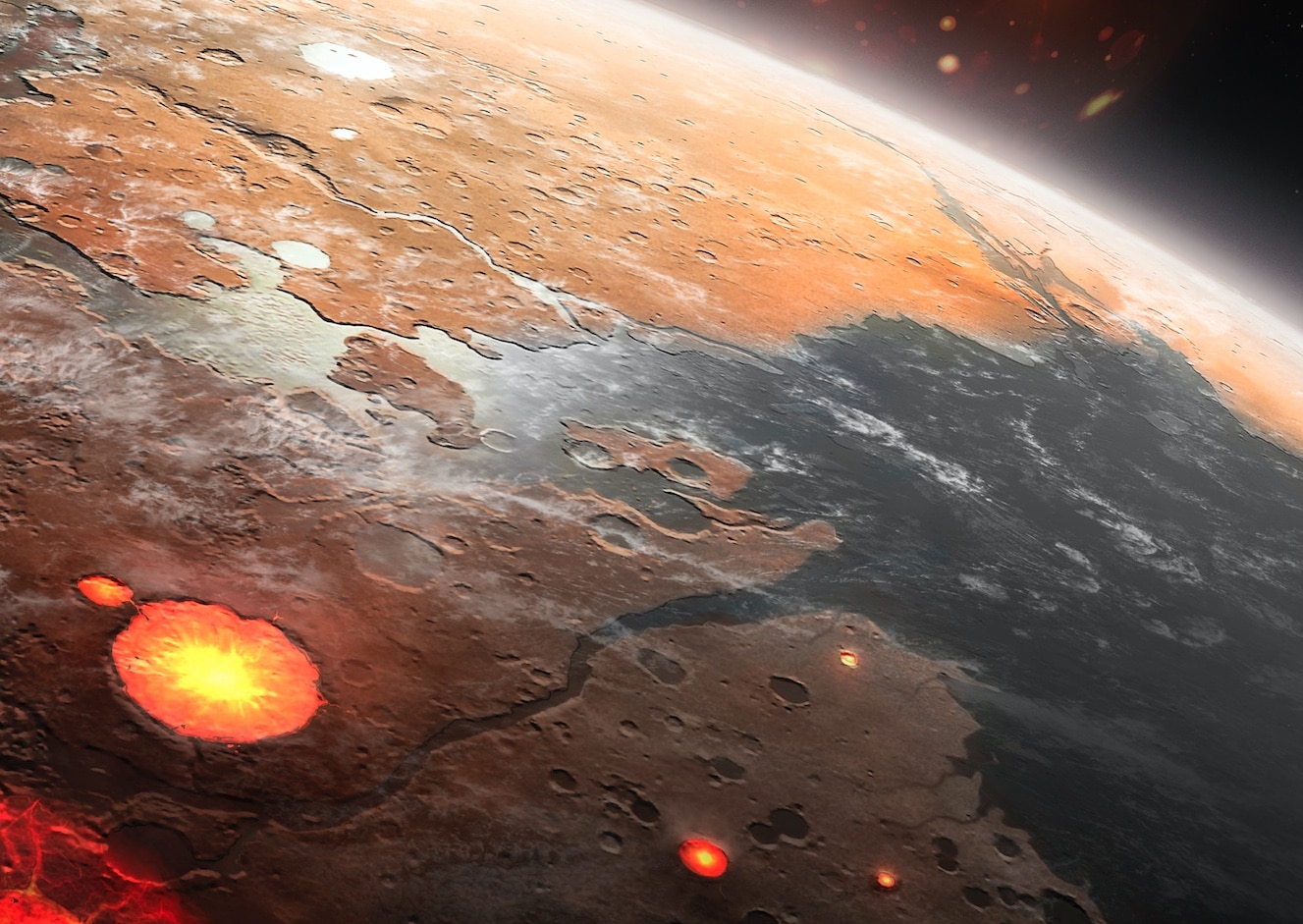It is believed that the emergence of the first stable land masses, called cratons, began about 2.5 billion years ago, driven by the movement of tectonic plates. But a recent analysis of rock deposits found in eastern India indicates that they actually appeared 3.3-3.2 billion years ago, 700 million years earlier than expected.
The emergence of continents had a significant impact on the atmosphere, climate, ocean composition, and especially the distribution of life on Earth. In fact, land erosion was the main source of nutrients for the first life forms that settled in coastal environments. ” Providing these nutrients to Earth’s early oceans was essential to creating and maintaining the first forms of life. Priyadarshi Chaudhary, a geologist at Monash University in Melbourne and co-author of the study said.
In addition, the oxygen provided by these primitive organisms in the process of photosynthesis eventually helped create the oxygen-rich atmosphere in which we live today. Thus the emergence of continents was a turning point in the history of our planet. ” Understanding when and how the continental crust under the atmosphere first formed is crucial, as it likely played an important role in establishing Earth’s habitability. “The researchers noted. So the team focused on the oldest continental parts found in India, Australia, and South Africa.
The elevation mechanism is different from the current process
As the continents rise, they begin to erode under the influence of rain and wind; The rocks turn into grains of sand carried by rivers and eventually accumulate along coastlines to form beaches. This has been the case for billions of years. Thus, by examining the rock records of ancient sand deposits, geologists can study earlier periods of continental formation.
The Singbhum Craton, an ancient piece of continental crust in India, contains many ancient sandstone formations. These different layers of sand, deposited in beaches, estuaries and rivers, were formed, buried and pressed into the rock. Scientists determined the age of these deposits by dating zirconium and lead – the zircon grains in the sandstone core contain traces of uranium that decays to lead over time.
However, the analysis found that the sedimentary rocks were deposited about 3 billion years ago, indicating the creation of a land mass at the level of present-day India around the same time. Meticulous team that sedimentary rocks of the same age are also found in the oldest cratons of Australia (Pilbara Wellgarn Cratons) and South Africa (Kapval Cratons); Thus, many land masses may have appeared around the world at this time.
It remains to be determined by the mechanisms by which these kratons were able to get out of the water, and by which ” Very different from the processes that cause the atmospheric crust to appear under today’s atmosphere ‘, confirms Jacob Mulder, a geologist from the University of Queensland and co-author of the study. While plate tectonics is now the main driver of the continental plate’s emergence, Choudhury argues that the cratons formed before the lithospheric plates began to move. ” When two continents [les plaques] They collide and form the Himalayas and form the Alps. This was not the case 3 billion years ago “,” He said?.
Basic process of reproducing life
Continents have a thick crust (usually over 45 km), which allows them to “float” like a plug in water over the Earth’s mantle; On the other hand, continental masses with crust less than 40 km remain under water. So the secret of the earth’s height lies in its thickness. Therefore, the team tried to understand how and why Haraune began to breed.
Their research found that the granite – resulting from the slow cooling of large clumps of magma – that makes up the Singbhum Craton formed at increasing depths about 3.5 to 3 billion years ago, meaning the crust was dense during this period, possibly due to the lava mass that formed over time. Granite is one of the least dense rocks. For example, the veneer of the Singapom Craton became more prosperous as it became stronger. The researchers concluded that it was 50 kilometers thick about 3 billion years ago; So it became thick enough to float, like an iceberg on water.
Not only was Earth capable of producing life – and thus oxygen in both the atmosphere and oceans – but the erosion of early continents is said to have contributed to the retention of carbon dioxide in the atmosphere, resulting in the formation of local cold climate pockets and the formation of glaciers. In fact, the first glacial deposits appear in geological records about 3 billion years ago, shortly after the formation of the first oceanic continents.
However, scientists are currently unable to determine how many continental countries the primordial Earth possessed, which would provide a better understanding of the evolution of the various geochemical cycles operating on this planet. There is also still uncertainty about the relief of the first continents. These questions will undoubtedly be the subject of future research.
Bronn: PNAS, P. Chowdhury et al.

Zombie specialist. Friendly twitter guru. Internet buff. Organizer. Coffee trailblazer. Lifelong problem solver. Certified travel enthusiast. Alcohol geek.

